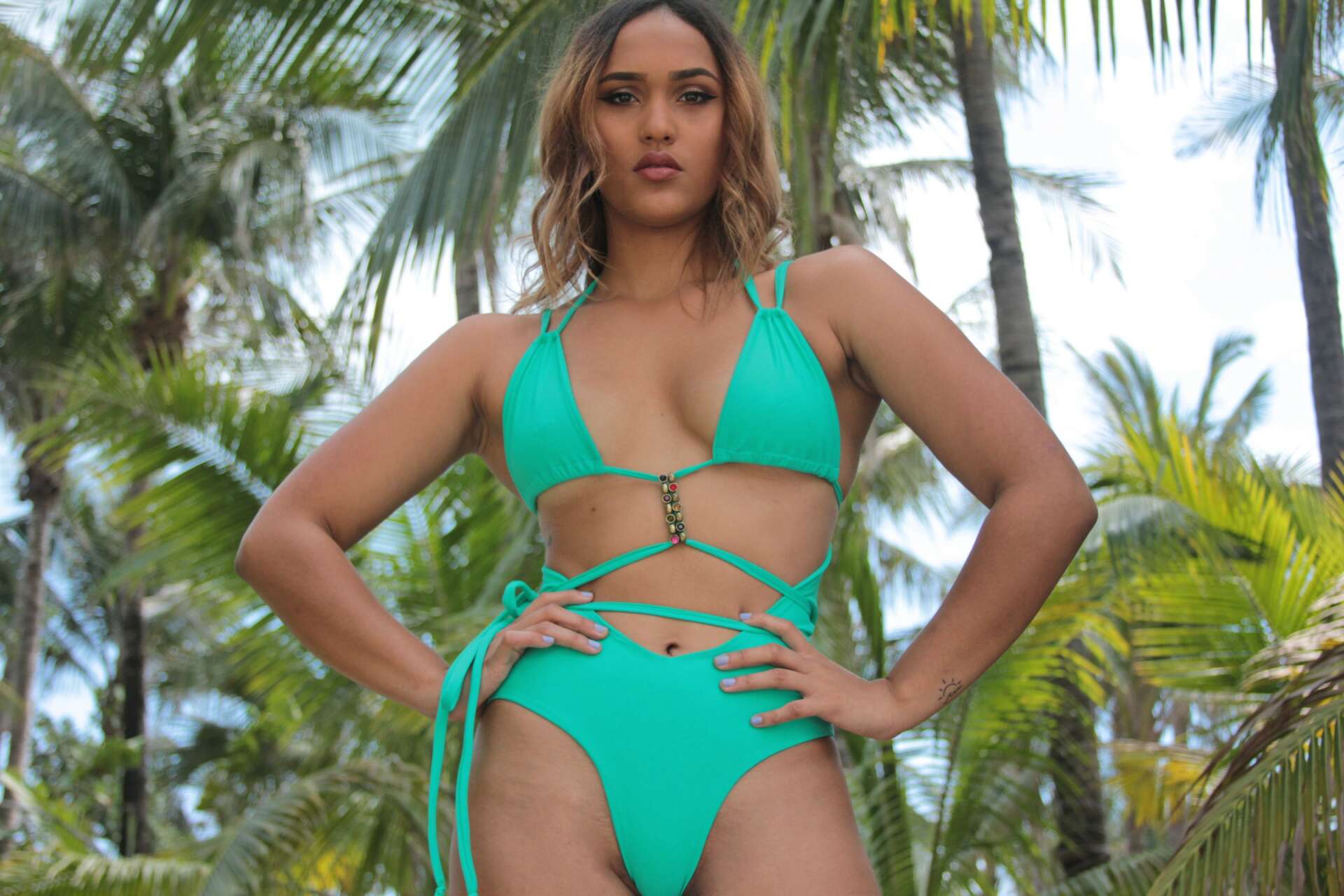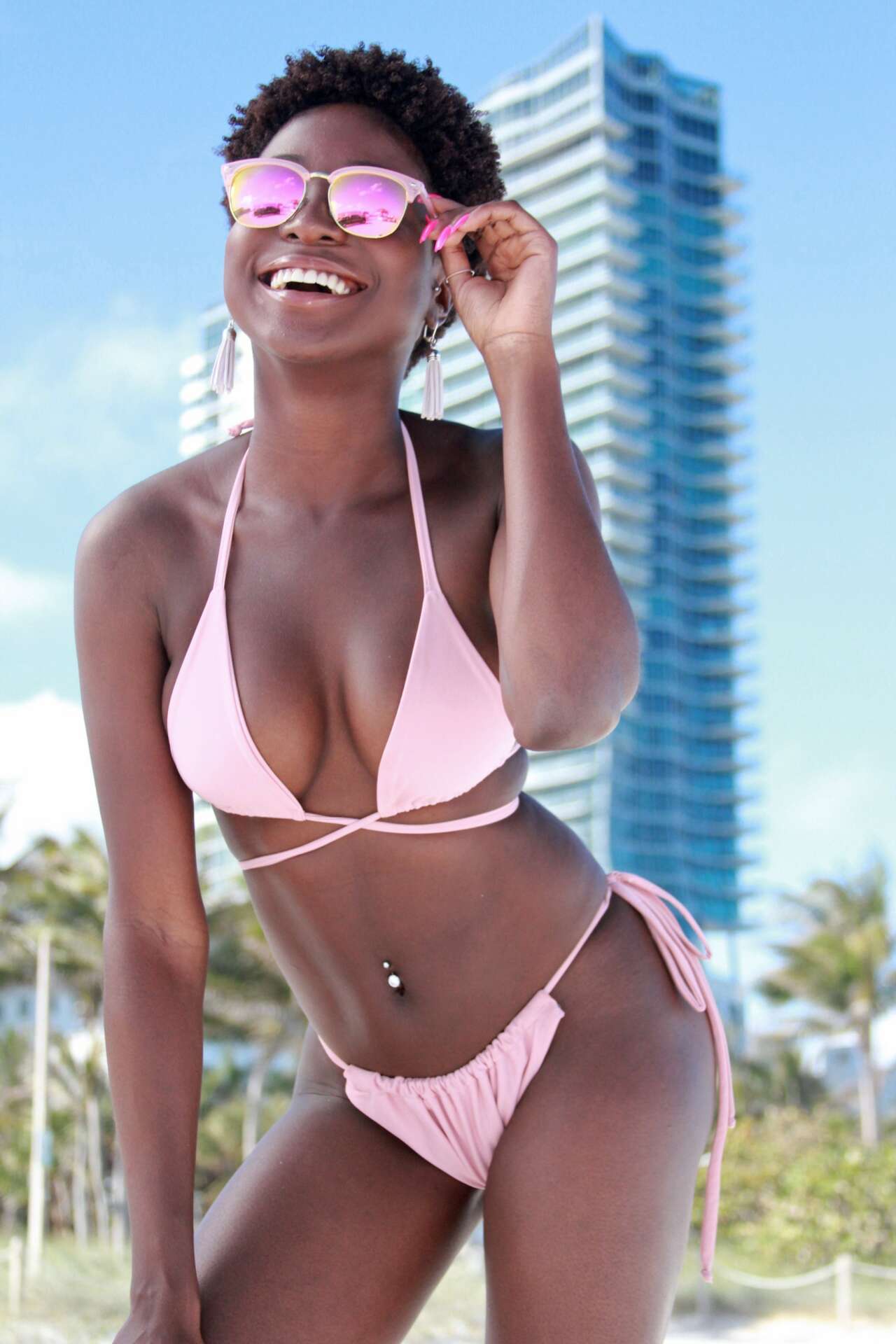We caught up with the brilliant and insightful Nadjhla Gracia a few weeks ago and have shared our conversation below.
Nadjhla, thanks for taking the time to share your stories with us today What do you think Corporate America gets wrong in your industry?
As a fashion designer at times, it’s overwhelming to think of what’s truly important; a sustainable environment, or a renowned track record as an entrepreneur. Corporate America seems to be focused on the latter, I decided that success means having a sustainable company that is going to leave the state of commerce, and the environment better than I found it. I mean, it is one thing to dream of accomplishing your vision by any means necessary, but putting capital ahead of what is necessary to secure a sustainable future is undoubtedly counterproductive. The endless cycle of thoughtless production season after season isn’t what I imagined life would be like as a designer. Vintage couture is so precious, so valuable to the industry, whereas the plagiarized fast fashion pandemic in today’s climate is unsustainable and displeasing.
The corporate world has to aspire to reach a level where the research required for sustainable advancement and innovation can be set in motion. Not only developing the machinery and preliminary equipment needed to manufacture, but also focusing on the amount that is produced, the quality, as well as the end of life cycle of garments. That will not only reduce the environmental impact, but it will increase the value of goods produced globally. Reflecting on this philosophy led me to pursue a PhD in management, focusing on information systems and technology. To aid in expanding the research needed to gather a consensus on the importance of reducing environmental pollution stemming from the fashion industry and the significance to the future generation of designers and consumers. The purpose of that venture is to help humanize the fashion industry’s reputation by showcasing the industry as a social pillar that doesn’t only take but also gives back by protecting the environment and improving the lives of consumers.




Great, appreciate you sharing that with us. Before we ask you to share more of your insights, can you take a moment to introduce yourself and how you got to where you are today to our readers
The dream of being a fashion designer came to be growing up in Miami; I didn’t really know what it meant to be a fashion designer, I was just infatuated with style. Extreme hair and dresses, shoes, gowns, and garments, I’ve always been passionate about every aspect of fashion. I couldn’t decide on an elective in high school, so my guidance counselor enrolled me in Introduction to sewing classes, which ended up being a life-changing experience. I then wanted to learn every aspect of fashion to illustrate my very own expression through fashion design.
My entrepreneurship journey started with NADJEA in 2010, as a luxury swimwear brand in Miami; the goal is to deliver exclusive design with a youthful yet elegant appeal. My swimsuit designs are elevated with signature cuts, body-hugging ribbons, and vibrant splashes of color for a chic and modern look. Every collection is fueled by passion, handcrafted with precise attention to detail. Ensuring that each swimwear collection from NADJEA is tailored for a memorable experience.
An experience I will be sharing through “Removing The Box”; as an Informative Autobiography on Womanhood, Fashion, Entrepreneurship, and The Link Between Creativity and Innovation. Hearing the stories and the processes of great leaders from various industries have always been inspirational, especially when realizing how some of the things we sometimes overlook are crucial to developing a successful career and becoming a tested leader. Sharing my experiences to inspire the future generation of designers and entrepreneurs will hopefully aid them in clearly defining the steps that will guide their path towards their vision; in addition to identifying the specifics that will keep them on track.
We’d really appreciate if you could talk to us about how you figured out the manufacturing process./
As a designer, manufacturing my own garments has always been my dream, it’s actually how I fell in love with fashion. I’m not satisfied with only imagining the garment, I have to sketch the details to start crafting the patterns, plus it’s also a must for me to source the fabric and raw textiles needed to bring the vision to life. I initially started with designing and sewing prom and homecoming gowns for my friends, then I became acquainted with an absolute approach to fashion manufacturing by attending Miami International University of Art & Design.
Early on I realized that the stresses of effectively working with manufacturers are enough to crush any designer’s dream. But the love I have for fashion is greater than any obstacle I’ve ever faced. So crafting my own manufacturing firm was essential in evolving as a fashion designer. I then realized that I needed to evaluate the fashion industry through the lens of empirical research. The most important lesson I learned along the way is properly managing my carbon footprint and my responsibility to the global community.
My complete manufacturing vision is to grow into a sustainable fashion manufacturing plant that can double as a research facility that will assess and evaluate the fashion manufacturing process. To understand how fashion manufacturers can implement Information Systems and Technology to reduce the harmful effects of environmental pollution stemming from the fashion industry. This will provide opportunities to understand how the shelf life of garments that would otherwise add to the problem of pollution can be extended and recycled. With no regard to the end of the life cycle of manufactured consumer goods, the global effects of the fashion industry are increasingly becoming a subject that demands a reckoning.




Let’s talk about resilience next – do you have a story you can share with us?
As a designer, manufacturing my own garments has always been my dream, it’s actually how I fell in love with fashion. I’m not satisfied with only imagining the garment, I have to sketch the details to start crafting the patterns, plus it’s also a must for me to source the fabric and raw textiles needed to bring the vision to life. I initially started with designing and sewing prom and homecoming gowns for my friends, then I became acquainted with an absolute approach to fashion manufacturing by attending Miami International University of Art & Design.
Early on I realized that the stresses of effectively working with manufacturers are enough to crush any designer’s dream. But the love I have for fashion is greater than any obstacle I’ve ever faced. So crafting my own manufacturing firm was essential in evolving as a fashion designer. I then realized that I needed to evaluate the fashion industry through the lens of empirical research. The most important lesson I learned along the way is properly managing my carbon footprint and my responsibility to the global community.
My complete manufacturing vision is to grow into a sustainable fashion manufacturing plant that can double as a research facility that will assess and evaluate the fashion manufacturing process. To understand how fashion manufacturers can implement Information Systems and Technology to reduce the harmful effects of environmental pollution stemming from the fashion industry. This will provide opportunities to understand how the shelf life of garments that would otherwise add to the problem of pollution can be extended and recycled. With no regard to the end of the life cycle of manufactured consumer goods, the global effects of the fashion industry are increasingly becoming a subject that demands a reckoning.
Contact Info:
- Website: NADJEA.COM
- Instagram: https://www.instagram.com/NadjeaOnline
- Facebook: https://www.facebook.com/NadjeaOnline
- Linkedin: https://www.linkedin.com/company/Nadjea
- Twitter: https://twitter.com/NadjeaOnline
- Youtube: https://www.youtube.com/channel/UCFbwqB2pXUHpu6RDHO_juGQ
- Other: https://www.FactsMarketingAgency.com
Image Credits
NADJEA.


